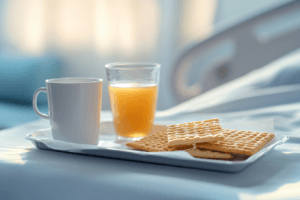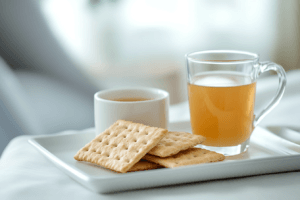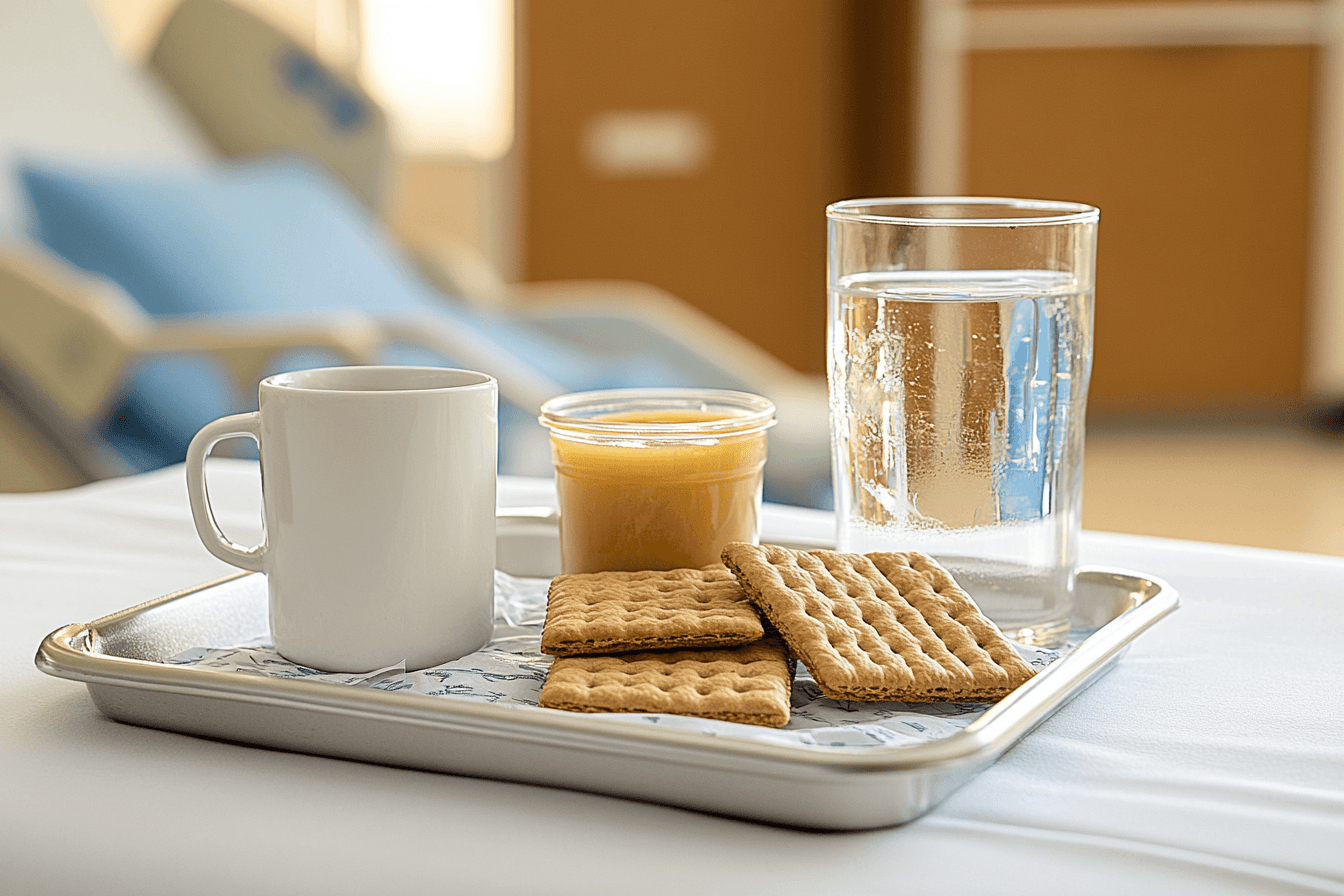A small snack with big benefits: Why graham crackers are always on hand in hospitals.Hospitals are known for their attention to detail and care, even in the smallest aspects, like the snacks they provide. Among the most common offerings is the humble graham cracker. Whether it’s after a procedure or as a light snack during a long stay, graham crackers are a consistent presence in medical settings. But have you ever wondered why hospitals always have graham crackers? Their popularity is no coincidence—it’s a combination of practicality, affordability, and patient care. Let’s explore the reasons behind this simple yet significant choice.
Why Do Hospitals Always Have Graham Crackers?
Hospitals are often associated with efficiency, practicality, and care. Among the many snacks and food items commonly found in medical settings, graham crackers stand out. Whether you’re recovering from surgery or sitting in the emergency room, chances are you’ve been offered graham crackers alongside juice. But why are these simple snacks so ubiquitous in hospitals? Let’s explore their significance in healthcare.
The History of Graham Crackers in Healthcare
Graham crackers have humble beginnings. Created in the early 19th century by Sylvester Graham, these crackers were originally part of a health movement promoting whole-grain, minimally processed foods. Over time, their appeal expanded beyond health reformers to become a household staple. Learn more about the fascinating history and nutritional profile of graham crackers.
Hospitals began stocking graham crackers because they were considered a digestible, non-irritating food. They offered patients a mild, easy-to-eat option that could provide quick energy without overwhelming sensitive stomachs. Even today, they remain a trusted choice for post-procedure recovery or as a quick snack during long hospital stays.

Why Hospitals Choose Graham Crackers
Graham crackers have become a staple in hospitals, consistently offered to patients as a snack or post-procedure treat. Their practicality, affordability, and health benefits make them an ideal choice for medical settings. Here are the key reasons why hospitals rely on graham crackers:
Ease of Digestion
Graham crackers are made with simple, mild ingredients like whole wheat flour and a touch of sugar. This makes them gentle on the stomach, an essential quality for patients recovering from procedures or dealing with nausea. Their ability to provide light nourishment without causing discomfort makes them a trusted option for healthcare providers.
Stabilizing Blood Sugar
After fasting or undergoing medical procedures, patients often experience low blood sugar. Hospitals serve graham crackers alongside juice to provide a quick, easily digestible source of carbohydrates, helping patients regain energy without overwhelming their digestive systems.
Practicality and Cost-Effectiveness
Hospitals require snacks that are:
- Affordable: Graham crackers are cost-effective, making them accessible for large-scale healthcare facilities.
- Long-Lasting: Their extended shelf life ensures they remain fresh over time, minimizing waste.
- Universally Tolerated: Compared to nuts or dairy-based snacks, graham crackers are less likely to trigger allergies or dietary sensitivities.
Comfort and Familiarity
For many patients, graham crackers offer a sense of comfort and familiarity during stressful situations. Their mild sweetness and nostalgic appeal make them a comforting treat, whether it’s post-surgery or during long hospital stays.

Digestibility
One of the main reasons serve graham crackers is their easy-to-digest nature. Made with simple ingredients like whole wheat flour and a touch of sugar, they are gentle on the stomach. This makes them an ideal choice for patients recovering from surgery, nausea, or other digestive issues. Learn more about why hospitals rely on graham crackers post-surgery.
Convenience and Affordability
Hospitals need snacks that are:
- Inexpensive: Graham crackers are cost-effective, making them a practical option for large facilities.
- Shelf-Stable: They have a long shelf life, reducing waste and ensuring availability.
- Allergy-Friendly: Compared to nuts or dairy-based snacks, graham crackers pose fewer allergenic risks.
Blood Sugar Stabilization
After procedures like colonoscopies, patients often experience low blood sugar. Graham crackers, paired with juice, provide a quick source of carbohydrates to restore energy and prevent dizziness. Their mild sweetness is appealing, especially to patients who may feel queasy.
Alternatives to Graham Crackers in Hospitals
While graham crackers are a classic, modern hospitals are adapting to meet diverse dietary needs. Here are some alternatives being introduced:
- Gluten-Free Crackers: Options for patients with gluten intolerance or celiac disease.
- Low-Sugar Snacks: Ideal for diabetic patients or those monitoring their sugar intake.
- Rice Cakes or Saltines: Equally mild and versatile, these snacks are often used as substitutes.
For more details on health-conscious snacks, check out the nutritional benefits of graham crackers.
FAQs About Graham Crackers in Hospitals
Why do hospitals serve graham crackers and juice?
Hospitals serve graham crackers and juice to help stabilize blood sugar, especially after fasting or medical procedures. This combination provides quick energy in a digestible form.
Are graham crackers healthy for patients on special diets?
While they are generally mild, patients with specific dietary restrictions (e.g., low sugar or gluten-free) should consult with medical staff before consuming them.
What makes graham crackers easy to digest?
Their simple ingredients and lack of heavy fats or spices make them gentle on the stomach, ideal for recovery.
Can patients with diabetes eat graham crackers?
Diabetic patients can enjoy graham crackers in moderation, especially if paired with a protein source like peanut butter to reduce blood sugar spikes.
What are some popular alternatives to graham crackers in hospitals?
Gluten-free crackers, rice cakes, or low-sugar snacks are often offered as alternatives for those with specific dietary needs.
The Comfort of Graham Crackers in Hospitals
Beyond their nutritional and practical benefits, graham crackers offer a sense of comfort. For many, they evoke childhood memories or simply provide a moment of familiarity in an otherwise stressful environment. This cultural significance helps explain why they continue to hold a place in hospitals worldwide.
Conclusion: Why Graham Crackers Matter in Healthcare
always have because they are practical, digestible, and comforting. Whether you’re recovering from surgery or simply in need of a snack, these humble crackers play a small but significant role in patient care. Their long history and continued relevance make them a staple in medical settings, proving that sometimes, simplicity is key.
Why Do Hospitals Always Have Graham Crackers?
Hospitals are known for their efficiency and practicality, even when it comes to snacks. Among the options available, graham crackers are a staple, consistently offered to patients post-procedure or as a light snack. But why do hospitals rely so heavily on graham crackers? Let’s uncover the reasons behind this ubiquitous hospital snack.
The History of Graham Crackers in Healthcare
Graham crackers have a rich history rooted in their creation as a health-focused food. Developed in the early 19th century by Sylvester Graham, they were originally part of a movement promoting whole-grain, minimally processed foods. Over time, graham crackers became a widely popular snack for their simplicity and versatility. Their role in hospitals stems from this very foundation of being a digestible and wholesome option. For a comprehensive look at the origin and health benefits, visit the ultimate guide to graham crackers.
adopted for their practicality in patient care. Light, easy to store, and gentle on the stomach, they quickly became a trusted choice for recovery snacks.

Why Hospitals Choose Graham Crackers
1. Ease of Digestion
Graham crackers are mild and made from simple ingredients like whole wheat flour and sugar. This makes them ideal for patients with sensitive stomachs or those recovering from nausea-inducing procedures. For patients wondering about their nutritional profile, graham crackers provide a gentle source of carbohydrates. Learn more about their benefits in are graham crackers healthy?.
2. Blood Sugar Stabilization
After procedures like colonoscopies, patients often need a quick energy boost. Graham crackers, paired with juice, offer a simple way to stabilize blood sugar levels without overloading the digestive system.
3. Affordability and Shelf Stability
Hospitals require cost-effective snacks with a long shelf life, and graham crackers fit this need perfectly. Compared to other snacks, they are less perishable and easy to store, ensuring they’re always on hand.
Alternatives to Graham Crackers in Modern Hospitals
While graham crackers remain a staple, hospitals are introducing alternatives to cater to diverse dietary needs:
- Gluten-Free Crackers: Suitable for patients with celiac disease or gluten sensitivities.
- Low-Sugar Options: For diabetic patients or those monitoring sugar intake.
- Rice Cakes: A light and simple substitute for those avoiding wheat.
For ideas on substitutes for graham crackers, explore alternatives to Nabisco’s chocolate graham crackers.
FAQs About Graham Crackers in Hospitals
Why do hospitals serve graham crackers and juice?
Hospitals serve graham crackers and juice to help stabilize blood sugar levels, particularly after fasting or procedures.
Are graham crackers healthy for patients on special diets?
While generally mild and safe, patients with specific dietary restrictions should consult medical staff before consuming them.
What are some popular alternatives to graham crackers in hospitals?
Hospitals may offer rice cakes, gluten-free crackers, or low-sugar snacks to accommodate different dietary needs.
Can diabetic patients eat graham crackers?
Diabetic patients can consume graham crackers in moderation, ideally paired with a protein source like peanut butter.
Why Graham Crackers Matter in Hospitals
Are more than just a snack—they’re a practical, digestible, and comforting option for patients in hospitals. Their long history and continued relevance make them a staple in medical settings, offering both convenience and care. For more insights into the role of simple snacks in diet and recovery, check out how graham crackers fit into weight loss.

